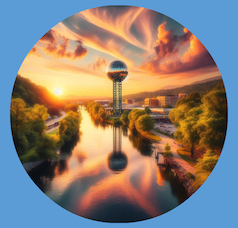Speaker
Description
The Spallation Neutron Source (SNS) facility at Oak Ridge National Laboratory (ORNL) in Oak Ridge, TN, USA completed the proton power upgrade (PPU) project in 2024 and is operating with 1.7 MW of beam power on target (August 2024). A ~1 ms long H- beam pulse produced by the RF-driven SNS Front-End Ion Source is accelerated to 1.3 GeV in the SNS linear accelerator (linac) and transported to the injection region of the SNS accumulator ring. The SNS operates with a 60 Hz beam pulse repetition rate (60 Hz x ~ 1 ms = ~ 6% duty cycle).
Beam is injected into the accumulator ring via the charge exchange process which uses stripping foils to remove the electrons from the H- beam (proton plus two electrons), thereby converting the H- beam into a proton beam. It takes ~ 900 ns for 1.3 GeV protons to travel once around the ~ 248 m circumference SNS proton accumulator ring, the "turn time" is then ~ 900 ns and the ring revolution frequency is then 1 / turn time = ~ 1.1 MHz. Four dual-gap ferrite loaded RF cavities in the RF section of the SNS accumulator ring are operated at either the fundamental ring revolution frequency (~1.1 MHz) or the second harmonic frequency (~2.2 MHz) to maintain a ~ 250 ns gap in the accumulated proton beam which is required for clean extraction of beam from the ring and also to suppress the peak current in the center of the proton beam bunch. This presentation will provide an overview of the SNS Ring RF systems and some recent work which includes impedance matching improvements to the second harmonic Ring RF power amplifier input circuits, replacement of the cavity tuning power supplies, and a look at cavity tuning vs. beam loading effects.
